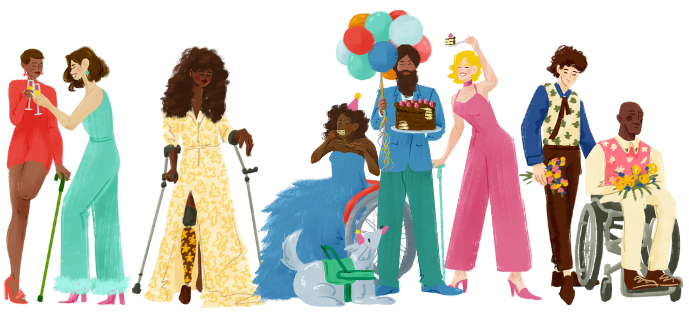International Day of People with Disabilities is celebrated annually on December 3 to honor and raise awareness of people living with disabilities. Disability is part of being human. An estimated 1.3 billion people—about 16% of the global population—currently experience significant disability. In the United States, 1 in 4 adults (28.7%) have some type of disability.
At Emerson, we are grateful for the beautiful and diverse range of abilities—cognitive, physical, and sensory—our students, staff, and faculty hold. We offer the following resources and opportunities to learn more about how you can center accessibility and access needs in your living, learning, and working environments.
Resources
Definitions
The below definitions were created by the cited organizations and resources. Emerson did not write these definitions; we offer them as starting points to learn more.
Ableism: “A system of assigning value to people’s bodies and minds based on societally constructed ideas of normalcy, productivity, desirability, intelligence, excellence, and fitness.” – Talia Lewis, Working Definition of Ableism.
Accessibility: “Accessibility is shaped by what we need to do, our interactions with the environment, and our personal preferences. Educational materials and technologies are’“accessible’ to people with disabilities if they are able to ‘acquire the same information, engage in the same interactions, and enjoy the same services’ as people who do not have disabilities.” – National Center on Accessible Educational Materials, What is Accessibility?
Access Needs: “Access needs are those things that are needed in order for someone to fully participate in a space or activity, which can include wheelchair access, scent-free space, ASL interpretation, etc. In a disability justice context, access needs are seen as universal—every bodymind has needs, not just disabled people.” – Sins Invalid, Skin, Tooth, & Bone (2nd Edition) by Sins Invalid.
Accommodations: Adaptations that occur at the individual level and are focused on an individual’s needs (Sins Invalid). “An accommodation is a change that removes a barrier to learning or getting work done.” – Accommodations: What They Are and How They Work.
Disability: There are a variety of different definitions of disability, including models that understand and navigate disability differently. Here are some definitions:
- “A physical or mental impairment that substantially limits one or more major life activities.” – Introduction to the Americans with Disabilities Act.
- “The medical model defines disability as a trait; something permanent and limiting. In contrast, an inclusive design approach is one that perceives disability as a mismatch between our needs and the design features of a product, built environment, system or service.” – The Inclusive Design Guide
- “Disability is a word that links people of common overlapping related experiences of oppression based in navigating a world designed and defined by able-bodied people. This term has been reclaimed by people whose bodyminds have been medicalized and pathologized, working from an empowered perspective.” – Sins Invalid, Skin, Tooth, & Bone (2nd Edition).
Emerson Resources
- Student Accessibility Services
- Office of Equal Opportunity
- Social Justice Collaborative
- Digital Accessibility Resources
- Instructional Technology Group
- Access: Student Disability Union
Learn More
Moving from Disability Visibility to Disability Artistry by Morgan Skolnik

“As an introduction to the event, one of the organizers said she wanted to get to know who was in the audience. ‘Who here is the parent of someone with a disability?’ Her question was met with applause and raised hands. ‘Who here works with people with disabilities?’ She went on. ‘Who has a sibling with a disability? Who went to school with someone with a disability?’ I waited through these increasingly distant associations to the world’s largest minority group, but she never asked the obvious question: who here has a disability
Read the full essay at https://howlround.com/moving-disability-visibility-disability-artistry.
